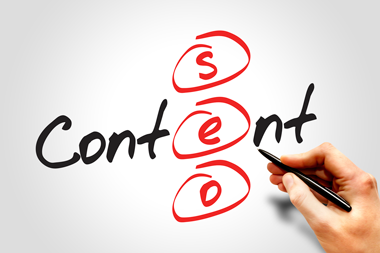You know your site needs to be optimized in order to be competitive in search results – but how else can you use SEO to your advantage beyond your site pages? Blog posts!

Many businesses will, smartly, hire an agency or consultant to do the necessary SEO research, site audit, and optimization on their website pages. This either happens at the launch of a new site or through an ongoing agreement. But if you or your marketing team use a CMS and are posting blog articles on a daily or weekly basis on your own, you could be missing additional opportunities to optimize your site.
We recommend that WordPress users install a plugin called WordPress SEO by Yoast. Once installed, this feature appears under the area in which you edit your blog content, is the Posts section. Here are some of the on-page SEO items you should check every time you create a new post:
Focus Keyword
The focus keyword summarizes the core topic discussed in your blog. It should be a simplified version of your topic (choose “sneakers” over “shoes”) but somewhat descriptive (choose “tennis sneakers” over “sneakers”). A drop down of suggestions based on Google Suggest will help you choose your keyword based on actual search terms.
SEO Title
The title should be long enough to convey the meaning of the page, but not so long that it will bore or overwhelm your readers. Consider it an extension of your focus keyword — in other words, frame the purpose of your keyword in the title. This will be the main element that shows up in Google search results, so you’ll want it to be concise, accurate, and catchy.
Meta Description
Your meta description is an introduction to your blog post in 156 characters. This snippet will display under the SEO title in search results. It must contain your focus keyword and be enticing enough for the reader to want more.
Page URL (Permalink)
The page URL should be an exact replica of your SEO title, minus any articles (a, the), pronouns (I, they, your, etc.) and conjunctions (and, but, so, etc.). “How to Optimize Your Blog Post for Stronger SEO” becomes “how-to-optimize-blog-post-stronger-seo”. In this particular instance, we chose to leave “to” in the URL, as it was part of “how to”, a commonly used search term and therefore a valuable term for our rankings.
Other Considerations
Other vital on-page SEO items to consider carefully and double-check when crafting each new blog post include the call to action, image alt tag, headers, any internal links, and social sharing elements. These on-page SEO items can be critical to the SEO success of your latest blog post, and ultimately your entire blog.
You might not think of the actual content as an on-page SEO item, but it is. Check and double-check the content and optimize it for SEO purposes as well. Even if your blog post covers a wide range of topics, choose a single keyword and optimize the text around it. Just make the sure the results are easy to understand and clear for the reader. Optimizing the post for search engines will do you no good if readers reject it and click away.
For a more in-depth blog SEO checklist, visit HubSpot’s blog here.


Comments